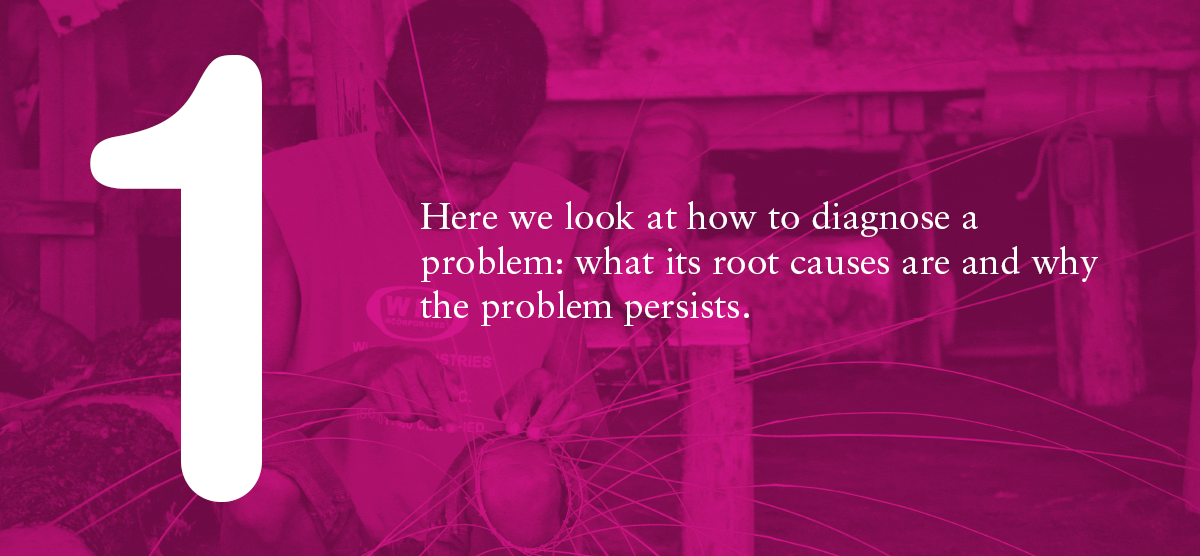1.1 Defining the problem
The pressure to deliver results often limits the amount of time available to define the root cause of a problem. This is a false economy, as it can lead to projects and programmes that address symptoms rather than causes. ROMA helps you understand the root cause of the initial problem you have identified. Read more
1.2 Diagnosing complexity and uncertainty
One way of diagnosing why policy problems persist is to examine how simple or complex they are and what causes any complexity. It is helpful to do this as different types and degrees of complexity give rise to markedly different solutions and different approaches to achieving these solutions. Complex policy problems require a more iterative approach, to which ROMA is ideally suited. Read more
1.3 Systemic factors: the political and institutional environment
This step helps you consider the wider political and institutional environment, how it affects the persistence of a particular problem and where reform is most likely to come from. Understanding political context is a key part of understanding how knowledge, policy and power relations interact with each other and what this means for how research-based evidence is taken up and used. Read more
1.4 Summary
What we discussed in this chapter. Read more



